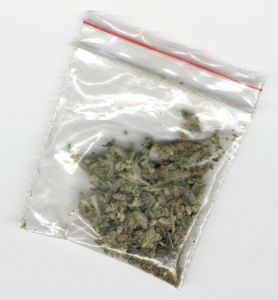 According to an article in the MetroWest Daily News, a Framingham couple was arrested last week for allegedly selling cocaine and heroin out of their apartment. The man and woman were arrested at their home, located at 140 Franklin Street. According to the article, the police began investigating the pair approximately one month ago after they received a tip that the two were selling drugs out of the apartment. During the investigation, confidential informants allegedly bought drugs from the couple inside the home. The undercover purchases led to the issuance and execution of a search warrant for the apartment. During the course of the search, the police found 40 plastic bags of heroin, totaling 17.5 grams, and 7.5 grams of cocaine. The police also reportedly found a stun gun and a .22 caliber bullet. The police further reported that the door to the apartment had more bolts and locks than the “average” apartment. Both the man and woman were charged with possession with intent to distribute heroin and cocaine, possession of ammunition without a firearm identification card, and illegal possession of a stun gun.
According to an article in the MetroWest Daily News, a Framingham couple was arrested last week for allegedly selling cocaine and heroin out of their apartment. The man and woman were arrested at their home, located at 140 Franklin Street. According to the article, the police began investigating the pair approximately one month ago after they received a tip that the two were selling drugs out of the apartment. During the investigation, confidential informants allegedly bought drugs from the couple inside the home. The undercover purchases led to the issuance and execution of a search warrant for the apartment. During the course of the search, the police found 40 plastic bags of heroin, totaling 17.5 grams, and 7.5 grams of cocaine. The police also reportedly found a stun gun and a .22 caliber bullet. The police further reported that the door to the apartment had more bolts and locks than the “average” apartment. Both the man and woman were charged with possession with intent to distribute heroin and cocaine, possession of ammunition without a firearm identification card, and illegal possession of a stun gun.
While the pair may have some trouble defending the ammunition and stun gun charges, they both appear to have a defense of straight possession in relation to the drug charges. To prove that they each possessed the heroin and cocaine with the intent to distribute it under G. L. c. 94C, §§ 32 and 32A, the Commonwealth must prove the following beyond a reasonable doubt: (1) that the substances were in fact heroin and cocaine; (2) that both the man and the woman respectively possessed the heroin and cocaine with the intent to distribute it to another person or person; and (3) that they did so knowingly and intentionally.
While the police may use information from confidential informants to obtain search warrants, the Commonwealth generally does not call such informants to testify to undercover purchases at trial. The reasoning behind this practice is that the police do not need to provide the identity of a confidential informant to obtain a valid search warrant, as long as the police establish that the informant had a basis of knowledge for the information provided, and that the informant is reliable. In contrast, if the confidential informant were to testify at trial that he or she had purchased drugs from the defendant(s), his or her identity would no longer be confidential, as the informant would be testifying in open court. Given the fact that virtually all confidential informants value their anonymity, they would not be inclined to participate in undercover buys if they knew that they would be called to testify at trial. Assuming the Commonwealth follows this practice in this case, it would have to proceed solely on the evidence obtained as a result of the search, namely, the drugs. Continue reading →
 Massachusetts Criminal Lawyer Blog
Massachusetts Criminal Lawyer Blog






 A Framingham man was arrested last week on various
A Framingham man was arrested last week on various  For a criminal charge to issue against an individual, a police officer must submit an application to the court for a criminal complaint. The application includes the alleged facts and the charges sought. A clerk magistrate then reviews the application to determine whether there is a sufficient basis for the complaint to issue. The specific legal standard is whether the information presented to the clerk magistrate establishes probable cause to believe that the individual committed a particular crime. If the clerk magistrate finds that there is probable cause, the complaint issues and the individual charged is brought to court and is arraigned on the charges.
For a criminal charge to issue against an individual, a police officer must submit an application to the court for a criminal complaint. The application includes the alleged facts and the charges sought. A clerk magistrate then reviews the application to determine whether there is a sufficient basis for the complaint to issue. The specific legal standard is whether the information presented to the clerk magistrate establishes probable cause to believe that the individual committed a particular crime. If the clerk magistrate finds that there is probable cause, the complaint issues and the individual charged is brought to court and is arraigned on the charges. On August 2, 2012, the Massachusetts legislature passed the
On August 2, 2012, the Massachusetts legislature passed the  According to an article in the
According to an article in the 